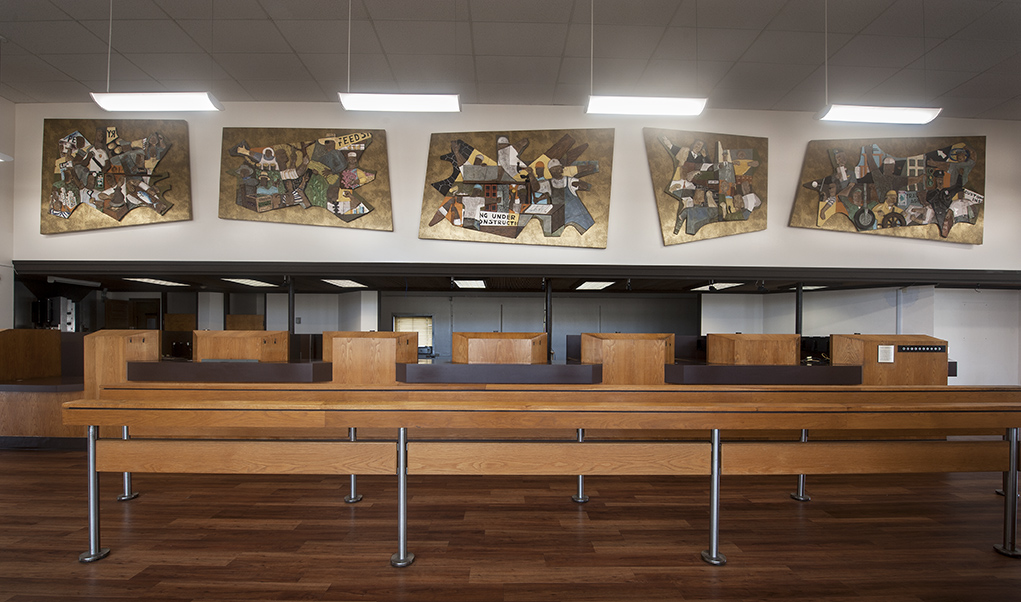Our friends at Docomomo Hawaii shared a serendipitous story of how they came to be the proud caretakers of a set of five murals by renowned Hawaii artist, Isami Enomoto. After agreeing to take the murals and not knowing who would adopt them for display, a series of “chance encounters” led them to the Center for Labor Education at West Oahu College, a perfect fit.
THE PROJECT:
On Oct. 31, 2015, the Bank of Hawaii, closed its Kapahulu branch and sold the building, which was home to a set of five 1961 murals by acclaimed Hawai‘i artist Isami Enomoto depicting labor in the islands. The bank did not want to keep the murals, and when none of the state’s established art institutions were able to accept them, Docomomo Hawai‘i assumed responsibility for the preservation of these artistically and historically important murals. The Bank of Hawaii donated the artwork, which was appraised at $50,000, to the organization.
To date Docomomo Hawai`i has spent $5,000 for the moving, crating, and storage of the works, which range in size from 6′-8″x6′-6″ to 11′-2″x6′-2 , with the largest piece estimated to weigh 650 pounds. Happily, Docomomo Hawai‘i has found a home for the murals at the Center for Labor Education at West Oahu College, which has agreed to publicly display them, and Docomomo is raising funds to prepare the wall, and clean, repair, move and install the them. The goal is to preserve and share this unique modern art with the people of Hawai‘i.
THE ART:
Rendered in a style reminiscent of Depression Era public works art projects, these five murals by Isami Enomoto depict laborers and occupations, vividly capturing an important moment in Hawai‘i’s history. Commissioned by the Bank of Hawaii shortly after statehood, and amid the Democratic revolution that in 1962 would result in the election of John Burns as Governor of Hawaii, the murals make it very clear that the bank well saw power shifting from a Republican oligarchy to a more broad-based government rooted in the working class. As such, the mural is not only a rare example of a 1960s large-scale ceramic piece, but also serves as a reminder of this dramatic time in Hawaii’s history .
The murals visually depict—and champion—a socially and economically just society in Hawai‘i, much as Diego Rivera‘s Depression-era murals at San Francisco’s Coit Tower. The ceramic murals are a powerful reminder of Hawai‘i’s labor past and the important role it plays in our society.
Docomomo US/Hawai‘i Chapter: Established in 2011, Docomomo Hawai‘i is a 501(c)(3), non-profit, volunteer-run organization dedicated to advancing the understanding, preservation and documentation of the modern movement in Hawai‘i in the areas of urban planning, architecture, architectural interiors, landscapes, design, and public art. Docomomo Hawai‘i considers these areas to be valuable historic resources and references for future generations.
The organization’s main thrust is to increase public and professional awareness of Hawai‘i’s modern heritage through education, events, development of resource materials, and collaboration with other organizations. Docomomo Hawai‘i members include local architectural, design, preservation and museum professionals, as well as members of the general public interested in mid century design.


